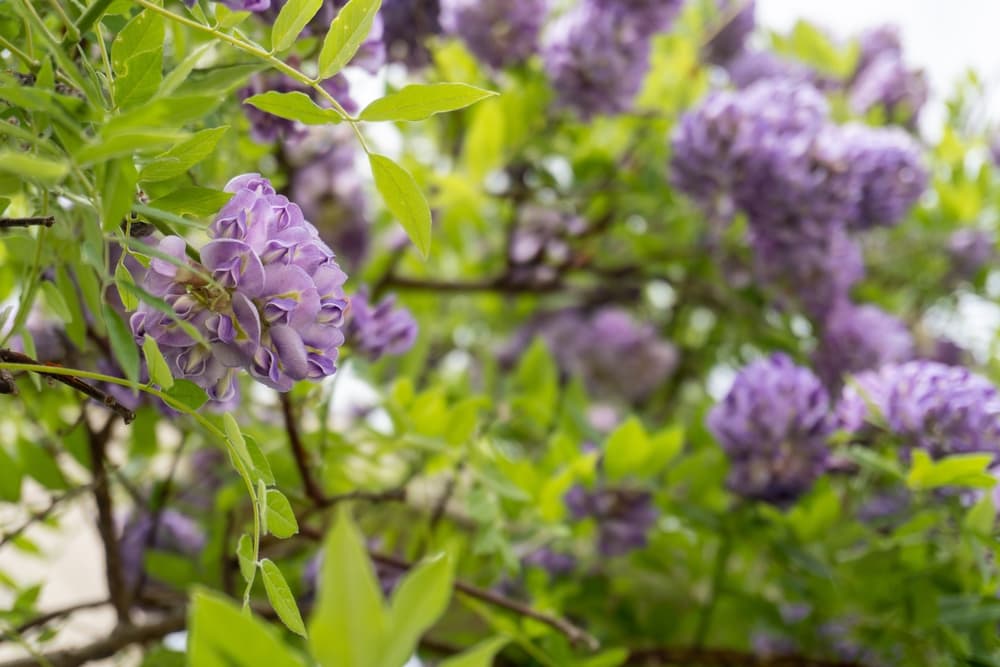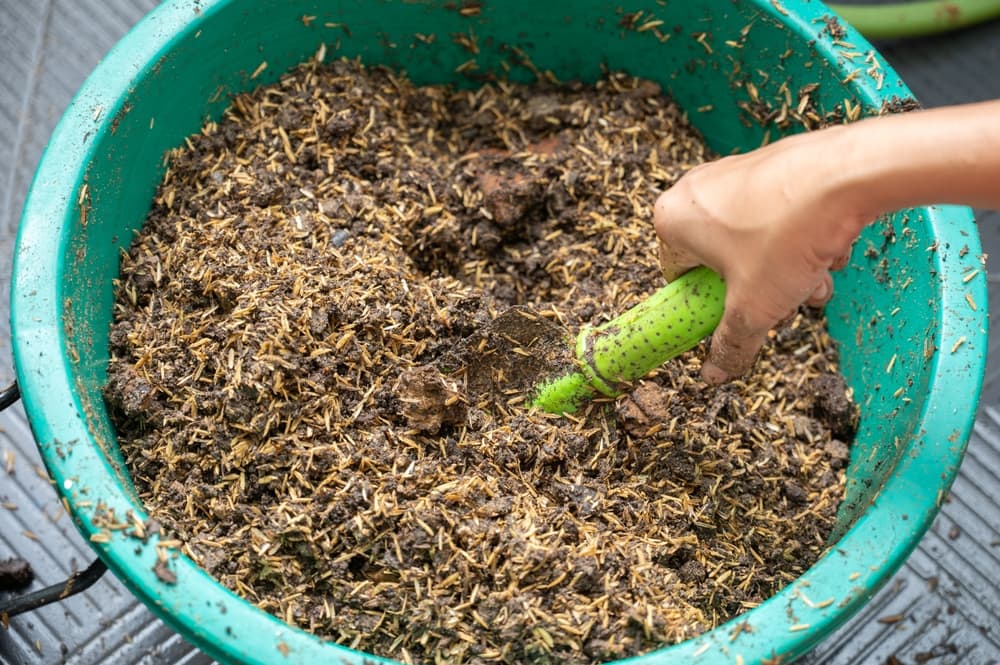CLIMBERS > WISTERIA
Chris is a gardening writer and nature enthusiast. He graduated from Oxford Brookes University in 2022 with an MA in Psychology. Chris works with the Leeds Green Action Society, helping their food cooperative by growing various fruit and vegetables on their two allotments in Hyde Park, Leeds.
Reviewed By PETER LICKORISH

Peter is a Horticulture Lecturer and self-employed Horticulturist, with a passion for diverse areas of the industry - from garden design to the science behind plant growth and propagation. He has completed the Royal Horticultural Society’s Master of Horticulture (MHort) Award and lectures on RHS courses at Bedford College.
Contributions From CHRIS O'KEEFE

Chris has been running The London Wisteria Company for the past 15 years and is also the Owner of O’Keefe Gardens Limited, a garden design company. He finds that these two businesses work well together as January to March are normally a little quieter in the garden calendar, which is the perfect time to concentrate on wisteria winter pruning and wire support.
IN THIS GUIDE
WISTERIA GUIDES
Effortlessly beautiful and timelessly charming, Wisteria is famously known for the pendulous clusters of lilac, white or bluish flowers it produces in late spring and early summer.
Often seen draping itself over arches and pergolas or climbing its way up the walls of a country cottage, wisteria is a serious showstopper.
Across our wisteria guides, we’ve partnered with Chris O’Keefe, Owner of The London Wisteria Company and O’Keefe Gardens Limited.
“There is nothing like the scent and feeling wisteria gives you whilst in bloom,” Chris says.
“I’m lucky to live and work in central London where, in spring, places such as Chelsea and Kensington are in full bloom with wisteria showcasing the frontage of many homes.”
Overview
| Botanical Name | Wisteria |
| Plant Type | Climber |
| Native Area | East Asia, Eastern United States |
| Hardiness Rating | H6 |
| Foliage | Pinnate leaves |
| Flowers | Racemes of purple, pea-like flowers |
| When To Sow | January, February, March, April, October, November, December |
| Flowering Months | May, June |
Sunlight
Preferred
Full Sun / Light Shade
Exposure
Sheltered
Size
Height
12M+
Spread
8M+
Bloom Time
May – July
Soil
Preferred
Most Soil Types
Moisture
Moist but well drained
pH
Any
Wisteria is a vigorous climbing shrub, and is actually a legume, making it part of the pea family (Fabaceae).1Harris, S. (n.d.-f). Wisteria sinensis. Oxford University Plants. Retrieved March 27, 2023, from https://herbaria.plants.ox.ac.uk/bol/plants400/Profiles/WX/Wisteria
As previously mentioned, wisteria adorns itself with cascading, beautifully fragrant lilac, blue or white flowers.

The stems are stiff and woody, and the trunks can become as thick as a small tree.
There are ten species of wisteria, with the most popular and widespread being native to China, Japan and North America.2Utah State University. (2022, August 3). Wisteria in the Garden. Retrieved March 27, 2023, from https://extension.usu.edu/yardandgarden/research/wisteria-in-the-garden
Wisteria Varieties
With ten species to choose from, it could be hard to know where to start.
We’ve chosen a few of the most popular to grow:
Chinese Wisteria

Botanical Name: W. sinensis
This wisteria twines itself anti-clockwise and can grow from about ten to twenty-five feet, sometimes even higher.
It can also be trained horizontally over the same distance making it a popular choice for a wall or side of a house.
The chains of fragrant flowers, which are violet in colour, grow to about a foot in length and bloom in late spring or early summer gradually over a few weeks.
This species has small oval-shaped leaves that usually will be bronze in colour when they are young.
Japanese Wisteria

Botanical Name: W. floribunda
The Japanese wisteria can grow up to 30 feet or higher and will also grow the same amount horizontally.
This species twines clockwise and has oval leaves that turn a beautiful yellow colour in autumn.
The flowers are usually violet and heavily scented, and their blooms last much longer than their Chinese counterpart.
This is a reliable choice and is wonderfully decorative and perfect for arches.
Silky Wisteria

Botanical Name: W. brachybotrys
This Chinese wisteria variety twines anticlockwise, with fine, silky-soft leaves. Hence its name.
The lilac or white flowers bloom from late spring to early summer, and the bloom will improve with age.
The clusters of flowers grow to about six inches in length and are strongly scented.
The silky wisteria grows to twenty-five feet and often higher and is perfect for walls.
Kentucky Wisteria

Botanical Name: W. frutescens var. macrostachya
This American species is native to the midwest, Louisiana and Texas.
It twines anticlockwise, and its pale violet flowers bloom in late spring or early summer.
The clusters grow to the length of up to one foot.
This wisteria can grow from fifteen to twenty-five feet and will often bloom again during the growing season.
American Wisteria

Botanical Name: W. frutescens
A native to the eastern parts of the United States, this wisteria twines anticlockwise and grows from ten to thirty feet.
It has lilac-blue flowers, blooming in clusters of four to six inches and are not generally heavily scented.
This species will bloom primarily in late spring and then sporadically throughout summer.
How To Grow Wisteria
While it is possible to plant and grow wisteria from seeds, you should expect to wait up to twenty years for its famous flowers to bloom (typical estimates range from 10-20 years).3How to grow wisteria. (n.d.). Royal Horticultural Society. Retrieved March 27, 2023, from https://www.rhs.org.uk/plants/wisteria/growing-guide
For this reason, we recommend that you buy a plant raised by grafting.
However, be aware that even with a grafted plant, you may have to wait up to five years for it to bloom.
“Wisterias must surely have a little ticking clock inside them,” says Peter Lickorish, a Horticultural Consultant.
“My Wisteria flowered for the first time exactly five years after planting it, to almost within a month, and has flowered abundantly since. It really is like the flick of a switch.”

The best time to plant wisteria is between October and April, although if you opt to grow it in a container, you can do this at any time of year.
Garden Planting
You will want to plant your wisteria in fertile, well-drained soil and preferably in a south or west-facing direction.
Being the vigorous climber that it is you will need to support them against a wall, or another garden structure, wires or even a tree.
Full sunshine is preferable, but they will tolerate a little shade. Although this may reduce their flowering.
Container Growing
As mentioned, if you are planting in a container, this can be done any time of year.
That said, wisterias are easier to care for in the autumn and winter months.

The container should be at least eighteen inches in depth and should be filled with a loam-based potting compost.
Do be aware that a container-grown wisteria will not be as successful as those planted in a garden.
Wisteria Care
Now you’ve planted your gorgeous wisteria, the next step is learning how to care for it.
Watering
Wisterias can dry out quickly, especially in sandy or light soil. Make sure you water them frequently, especially during dry spells.
Feeding
In springtime, we recommend a high potash feed to encourage those gorgeous flowers.
Rose or flowering shrub fertiliser will also work.

If you are growing your wisteria in a container, then liquid tomato fertiliser is ideal. You could also use slow-release fertiliser in compost.
Propagating
As previously mentioned, wisteria grown from seed is said to take up to twenty years to flower, so if you want to share the wealth with friends and family or just stock up for yourself, then we recommend taking softwood or hardwood cuttings.
Take softwood cuttings in spring to mid-summer, and hardwood cuttings in winter.

If you’d like to try growing from seed, collect the bean-like seed pods from an established plant, then place in a tray to allow them to ripen.
Next, gently open the pod and place in compost at a depth of about two centimetres.
If you find, upon opening the pod, that the seed is dry, then place in water and soak it for 24 hours before planting.
References
- 1Harris, S. (n.d.-f). Wisteria sinensis. Oxford University Plants. Retrieved March 27, 2023, from https://herbaria.plants.ox.ac.uk/bol/plants400/Profiles/WX/Wisteria
- 2Utah State University. (2022, August 3). Wisteria in the Garden. Retrieved March 27, 2023, from https://extension.usu.edu/yardandgarden/research/wisteria-in-the-garden
- 3How to grow wisteria. (n.d.). Royal Horticultural Society. Retrieved March 27, 2023, from https://www.rhs.org.uk/plants/wisteria/growing-guide

